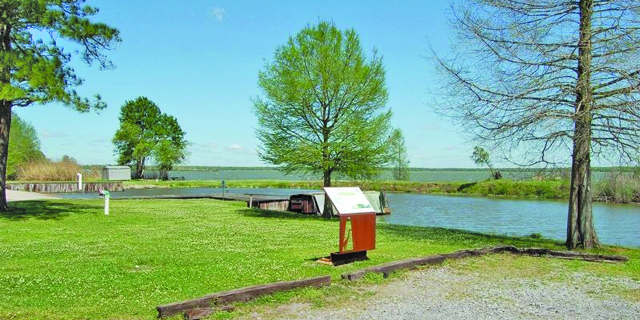Heirloom Tomatoes
Published 1:41 pm Friday, August 10, 2012
Heirloombrtomatoes thought to taste better
brbrbrbr
Trending
Thebrfascination with heirloom tomatoes has some backyard growers willing to give upbrthe qualities that brought improvement to hybrid varieties in exchange for old fashionedbrflavor, according to LSU AgCenter gardening specialist Kiki Fontenot.
brbrbrbr
“Ibrthink people tend to associate the tomatoes with the ones maybe theirbrgrandparents grew when they were young, and they believe the flavor is justbrbetter,” Fontenot said.
brbrbrbr
Forbrsome tomato enthusiasts, heirloom tomatoes have a taste that is unmatched. ButbrFontenot questions if it’s just in their mind.
brbrbrbr
Trending
“Itbrmay be like going back to your elementary school and remembering how big itbrlooked back then, but now it looks a lot smaller,” Fontenot said.
brbrbrbr
Heirloombrtomatoes have slowly been phased out of the market because the new hybridbrvarieties just simply out-compete them.
brbrbrbr
Heirloombrtomatoes are often misshapen and off-color, which are characteristics that makebrthem hard to produce for today’s market.
brbrbrbr
Forbrthe past 50 years or so, breeders have worked to overcome these deficiencies bybrdeveloping hybrid varieties that are more acceptable to today’s shopper.
brbrbrbr
“Withbrthe hybrid varieties, a grower may be able to make 30-40 pounds of tomatoes perbrplant, where you would do well to make 10 pounds with the heirloom varieties,”brFontenot said.
brbrbrbr
Onebrof the problems with hybrids is they are often picked green, then gas isbrapplied to force them to turn red and then they have to be firm for shipping.
brbrbrbr
Thesebrtomatoes are artificially ripened, so the flavor is often not there, Fontenotbrsaid.
brbrbrbr
Thisbrproduction process is good for commercial growers, but it is causing manybrsmaller growers to reach back for the tomatoes they grew up with, which are thebrheirlooms.
brbrbrbr
Abrhybrid grown in the backyard garden, if left to ripen on the vine, will tastebrbetter than a hybrid from the grocery store, Fontenot said.
brbrbrbr
“Ibrthink people associate hybrid with tomatoes from the grocery store,” Fontenotbrsaid. “They sometimes don’t have the flavor of those from the garden, but itbrreally is a matter of opinion. Everybody’s taste buds are different.”
brbrbrbr
Thebrreal heirloom tomato growers say there are certain requirements that must bebrmet to be called heirloom, and the main criteria is the tomato has to have atbrleast a 40-50 generation history, Fontenot said.
brbrbrbr
ReginabrBracy, LSU AgCenter professor and resident coordinator at the Hammond ResearchbrStation said according to Taylor’s Guide to Heirloom Vegetables, there are two otherbrrequirements that have to be considered.
brbrbrbr
“Taylorbrsays an heirloom also must grow true to type from seed and must have a historybror folklore of its own,” Bracy said.
brbrbrbr
Peoplebrare looking for that old-time tomato flavor, but there is a trade-off, said JimmybrBoudreaux, retired LSU AgCenter horticulturist.
brbrbrbr
“Everybodybrshould raise a few heirlooms,” Boudreaux said. “The problem is they won’t holdbrup for commercial growers.”
brbrbrbr
Heirloombrtomatoes tend to be softer, and they have to be used soon after they ripen.
brbrbrbr
Bracybrsaid another shortcoming of the heirloom tomatoes is they don’t have thebrresistance and vigor of the hybrids.
brbrbrbr
Fontenotbrsaid soil may also play a role in the taste of the different varieties ofbrtomatoes.
brbrbrbr
“Webrgrew heirloom tomatoes in our research plots this year because of the highbrinterest from backyard growers,” Fontenot said. “But they are not varietiesbrthat we will spend much time on because we’ve been breeding for the hybridbrtraits that just aren’t available with heirlooms.”





